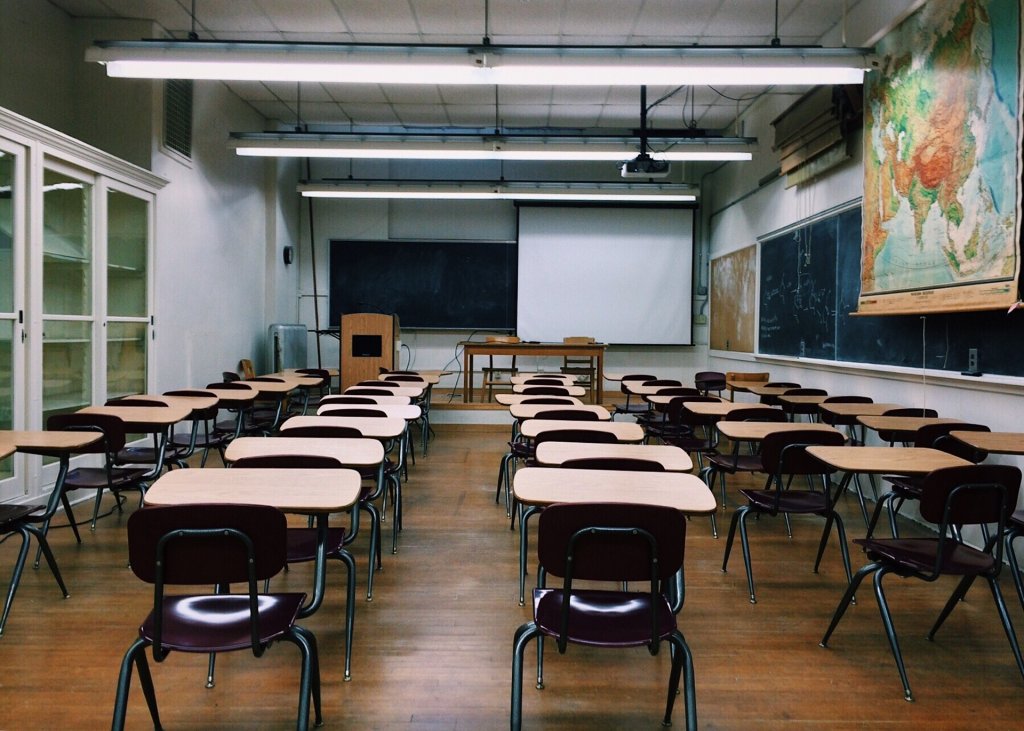Assessing Classroom Learning Environments
Last month, I used the Ready, S.E.T., Listen model as a framework to consider classroom listening demands. This month, I’ll expand on the “E” in the model to describe the complex classroom learning environments that students with hearing loss encounter on a typical school
day.
Assessment of, assessment for and assessment as The Ontario Ministry of Education document, Growing Assessment: Assessment, Evaluation and Reporting in Ontario Schools describes three types of assessment – assessment of learning, assessment for learning and assessment as learning.1

Assessment of learning is a summative, static “snapshot” of what has been learned in a particular content area (for example, a test at the end of a unit on how to calculate area and perimeter in grade 4). Assessment for learning is a much more dynamic and interactive approach to assessing the process of learning for an individual student, evaluating the effectiveness of strategies, and scaffolding. Assessment as learning considers the use of assessment to help students become independent, autonomous learners who are good self-advocates. Let’s consider how we can apply these concepts to assessing classroom learning environments.
Assessment of Learning: Classroom Acoustics

There is no lack of research documenting poor classroom acoustics, with little or no apparent improvement over the years; Nelson & Blaeser provide us with a useful summary of the research and legislation in this area.2 It is still possible to encounter open concept schools that have few or no full internal walls, or round schools with the gym situated in the middle and classrooms with partial walls arranged in spokes around the perimeter. While one might assume that acoustics in new school constructions would be much better, in my experience, the frequent use of large open spaces and vast expanses of glass create schools which are aesthetically pleasing but arguably, acoustically no better than schools built in the last century.
It is safe to say that finding a classroom that meets the recommendations for noise and reverberation for a student with hearing loss is a difficult job indeed. In 2006, the Acoustical Society of America (ASA) published a position statement opposing the use of sound field systems, stating “Good classroom acoustics can be achieved passively with good architectural design practice.” While no one would disagree, the reality is that these “good classroom acoustics” continue to elude us.3
Dubman conceded that there could be benefits of sound field systems for multimedia presentations but only in classrooms with good acoustics.4 In 2013, he noted that “When ASA members discovered that typical American classrooms were too noisy or reverberant for serious learning in 1988 they began a successful grassroots movement to fix them.”5 However, he does note that there could be a place for sound field systems if noise levels and reverberation times were documented prior to installation, and that “Acoustical consultants or credentialed school audiologists properly trained and equipped may screen and document classrooms for sound field systems.”5
The reality, however, is that the problem of poor classroom acoustics has not been fixed. School principals do not have the capacity to hire acoustical consultants, or pay for renovations, and there are very few school audiologists in Canada. While we continue to advocate for change, performing an assessment of the acoustics of an individual classroom rarely leads us to the conclusion that a student with hearing loss does not need some type of Hearing Assistance Technology.
Assessment for Learning: Classroom Listening Expectations
Paradigm shifts in both general education, and deaf/hard of hearing education have occurred in parallel, resulting in a situation in which the vast majority of children with hearing loss are educated in regular education classrooms in their home schools. The Consortium for Research in Education in the UK, for example, reports that 84% of children with hearing loss are mainstreamed, only 3% attend schools for the deaf, and the rest are educated in settings focused on disabilities other than hearing loss.6
The combination of universal newborn hearing screening, earlier intervention, cochlear implantation and improved hearing aid technology has resulted in auditory, spoken language and literacy outcomes that allow the possibility of successful full inclusion (mainstreaming) for many children.
At the same time as improvements in outcomes for today’s children with hearing loss have occurred, there have been paradigmatic shifts in educational philosophy. Shifts towards enquiry based learning has produced classrooms which are dynamic, interactive, and collaborative.
Scott describes effective learning in this way - “Real world experiences merged with sustained engagement and collaboration offer opportunities for learners to construct and organize knowledge; engage in detailed research, enquiry, writing and analysis; and communicate effectively to audiences.”7
Education is no longer considered to be simply the transmission of content knowledge from teacher to students. In Ontario, for example, assessment focuses on two different categories of expectations: Content Standards and Learning Skills.
Content Standards define the curriculum expectations at each grade level; Learning Skills “…are designed to help students develop a positive sense of self, use coping and management skills, monitor their own progress, develop and maintain healthy relationships, and use critical and creative thinking processes as they set goals, make decisions, and solve problems.”8
Consider the expectations for full day kindergarten students, for example, which are based on 4 frames: Belonging and Contributing, Self-Regulation and Well-Being, Demonstrating Literacy and Mathematics Behaviours, and Problem Solving and Innovating.8
These learning skills do not happen through direct instruction; they require communicative interactions with teachers and peers, through classroom discussions, small and large group work, and other collaborative activities. Participating in these complex communication activities requires very high levels of auditory and language skills for our students with hearing loss. Full inclusion almost automatically equals more complex listening environments. Assessing how teaching and learning happen throughout the day, therefore, is important for understanding where students with hearing loss will likely encounter barriers and obstacles.
Assessment as Learning: In-Service and Self-Advocacy
We should also be mindful of opportunities to consider assessment as learning. Involving the classroom teacher and student in the process of assessing obstacles to participation is an excellent opportunity for learning. For example, a classroom teacher recently commented that she had never realized that difficulties with making friends at school could be related to limitations of the size of the “listening bubble” imposed by microphone capabilities, creating fewer opportunities to “overhear” conversational interactions and fewer opportunities for incidental learning. She was then able to immediately extend this information to predict a variety of situations in her own classroom where misunderstandings or lack of engagement in classroom activities that she had assumed were related to ability or personality, were likely due to a lack of access to the auditory information available to hearing students.
Discussing the relationship between the demands of the learning environment and hearing loss is also an excellent opportunity to help students understand the variables that contribute to difficulties in understanding. Students who do not understand the implications of their hearing loss in complex listening environments may in fact feel that they are incapable, unintelligent or just not trying hard enough when they misunderstand, feelings which are devastating to self-esteem and self-determination.
Assessing the contribution of the environment in our Ready, S.E.T., Listen model, then, is far more complicated than simply measured unoccupied and occupied classroom noise levels, but will ultimately result in better opportunities for successful classroom engagement and learning.
References
- Ontario Ministry of Education. Growing Success: Assessment, Evaluation and Reporting in Ontario Schools. Toronto: Author; 2010.
- Nelson P and Blaeser S. Classroom acoustics: What possibly could be new? The ASHA Leader 2010;15:16-19. doi:10.1044/leader.FTR2.15112010.16
- Acoustical Society of America. Position on the Use of Sound Amplification in the Classroom; 2006. Available at: http://asa.aip.org/amplification.pdf
- Dubman D. Soundfield amplification is a poor substitute for good classroom acoustics, J Acoust Soc Amer 2008;123:3919. https://doi.org/10.1121/1.2935941
- Dubman D. Hot topics in architectural acoustics: Classroom acoustics and archaeoacoustics. J Acoust Soc Amer 2013;134, 4124. https://doi.org/10.1121/1.4831150
- Consortium for Research in Deaf Education (CRIDE). CRIDE report on 2017 survey on educational provision for deaf children; 2017. Available at: http://www.ndcs.org.uk/document.rm?id=9801
- Scott C. The Futures of Learning 3: What kind of pedagogies for the 21st century? Paris: UNESCO Education Research and Foresight; 2015: [ERF Working Papers Series, No. 15].
- Ontario Ministry of Education. The Kindergarten Program 2016. Toronto: Author; 2010.

